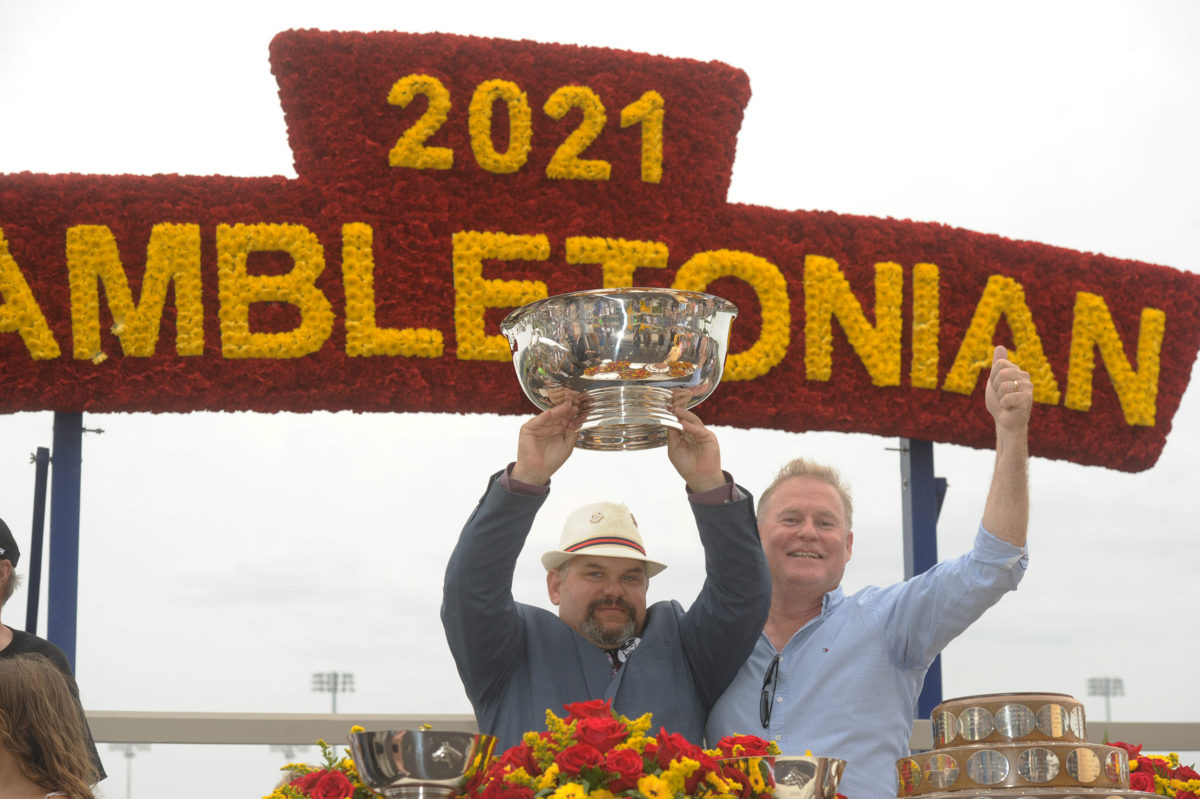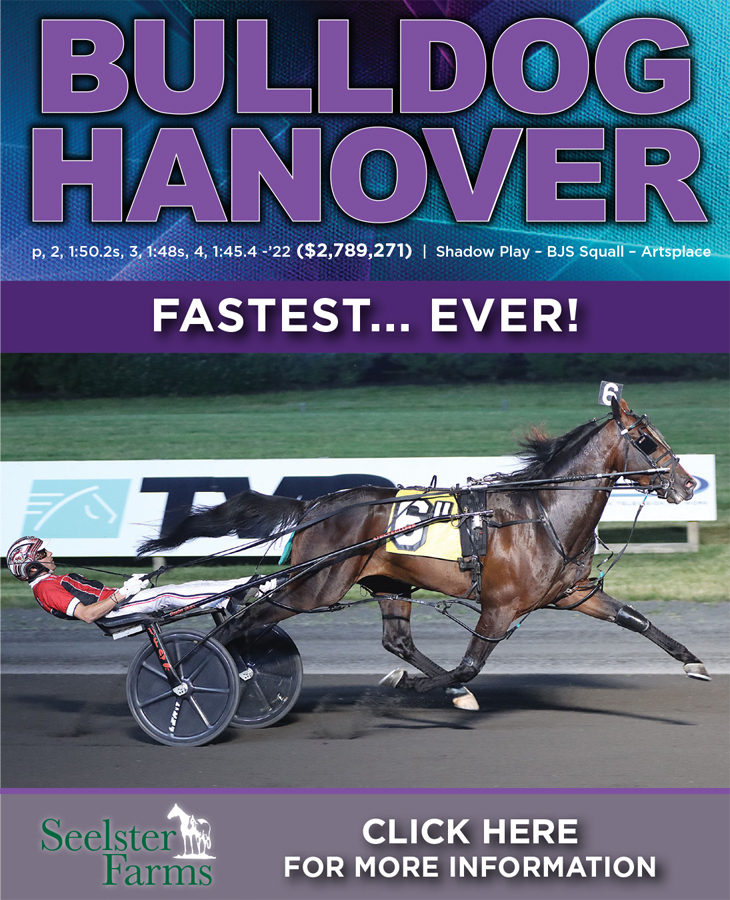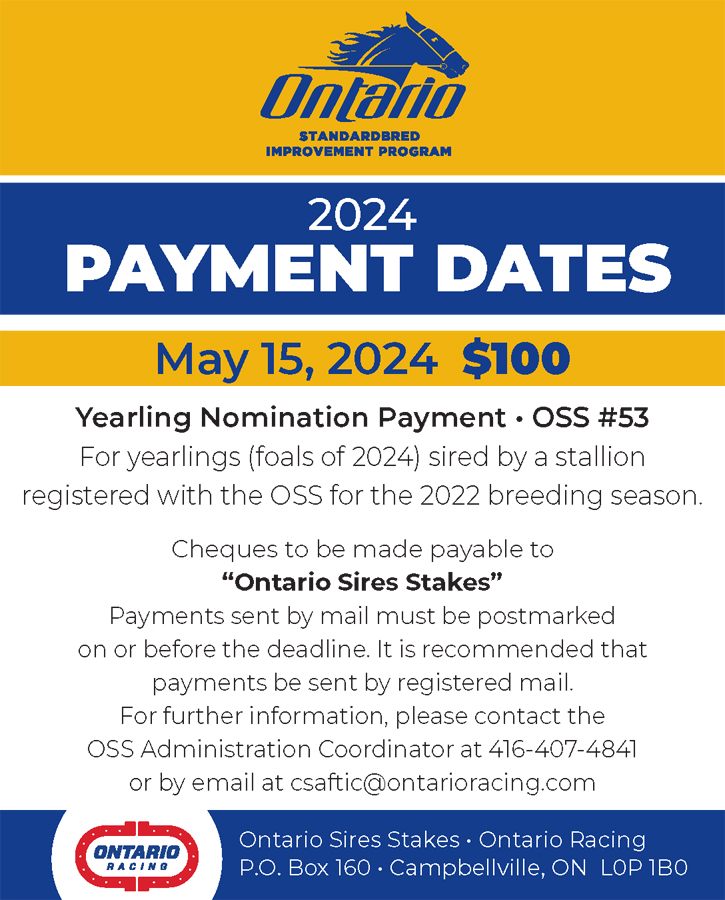

Feel the Bern
Bjorn “Bernie” Noren learned from two of the best — Takter and Svanstedt.
by Murray Brown
Very few in the world of harness racing have received a better equine education than Bjorn “Bernie” Noren. He has studied under arguably the two greatest equine masters in North America and perhaps the world — Jimmy Takter and Ake Svanstedt —both for relatively lengthy periods of time.
It began back in Noren’s hometown of Vara, Sweden. Noren had become a great fan of American trotting. Three of his earliest equine idols were Mack Lobell, Peace Corps and Napolitano. He bonded with them when they came to Sweden to race. At the age of 20, he was offered the opportunity to go stateside to work for Takter. He jumped at the opportunity. He began as a groom in the Takter ranks. And after five years, he was elevated to the position of second trainer with the top trotting stable in North America and perhaps the world. Among his fondest memories while with Takter were those with maybe the greatest of all trotting mares, Moni Maker.
“I recall training her a week before what I believe was her greatest accomplishment, her monumental world record time trial under saddle while being ridden by Julie Krone,” Noren said. “I’ve been fortunate enough to have seen and even sometimes to have played a small part in a few of the greatest events in harness racing history. That effort by Moni Maker might be the one at the very top.”
You were with the Takter stable the entire time Moni Maker was there.
“There is likely very little I can say about Moni Maker that hasn’t already been said. She was as close to perfection as can possibly be found in a trotter. She had it all. She was already an accomplished trotter when she first arrived at Takter Stable from Bill Andrews. Jimmy Takter, Conny Svensson, and our team at the Takter stable set about her transition from an extremely good trotter to becoming the greatest trotter in the world.”
You were at the Red Mile the day she went against time under saddle. Describe the day as you remember it.
“It was an overcast day. The mood at the track was like no other I can remember ever before or since. The feeling in the place was electric. It was as though those there knew something monumental was about to happen. To say that I wasn’t nervous would not be correct. After all, this was something that had never been tried. Here we had a great mare, the best one ever in my opinion, being ridden for the first time by Julie Krone, the greatest female jockey in horse racing history before a large crowd at what I consider our finest racetrack.
“Actually, it wasn’t the first time Julie had sat astride her. Earlier that week, she went a training mile with her and felt confident that Moni Maker was poised to make history. Jimmy and Wally Hennessey were driving the prompters. Before the event, Julie, Jimmy and Wally were cool as cucumbers, but I was nervous. Everything went off like clockwork. If the event had been scripted better, I wouldn’t know how that would have been possible. After the performance, Julie, Jimmy, and Wally signed autographs and spoke with the fans in the grandstand. It was one of, if not my greatest day in the sport.”
What is it that in your opinion made Jimmy Takter the great horseman that he is?
“Everything. He is a great manager. He is adept at all things regarding horses. He has a great eye and perhaps more importantly a great ‘feel.’ Sometimes I had the feeling that he knew what a horse was going to do before the horse itself knew it. He was more than an adequate driver. Although he might not be as good at getting results as our greatest, he was still better than most. He most certainly knew more about a horse and how it might be helped than most of our best drivers do after sitting behind it for the first time. Perhaps most importantly he is a great diagnostician. He knows how to manage and take care of a horse before it gets sore.”
After working with Takter you went out on your own?
“Yes. The opportunity presented itself. I felt I had to give it a try, so I set up shop at White Birch Farm in Allentown, New Jersey. I got some horses with the help of Richard ‘Nifty’ Norman. I was doing all right the first year with horses like Show Her The Money ($871,161) who won the Miss New Jersey at The Meadowlands, and Vertical Horizon ($856,063). I had a good year with lots of wins at The Meadowlands. It helped to get a few more horses and some nice new yearlings. The following year, I had Southwind Samurai, who finished second in her Hambo Oaks elimination for my favorite catch driver of all the time, Mr. John D. Campbell. But in the Hambo Oaks final we were unlucky and got run over in the last turn, and she made a break. After three years in New Jersey, we decided to give it a try in Canada. The horses were racing well up there. In the spring of 2013, I received a phone call from the great Swedish horseman Ake Svanstedt, who said he was going to establish a stable on this side of the Atlantic, in New Jersey. He was looking for someone fluent in both Swedish and English and knowledgeable in the ways of North American racing to help him with administering his American stable. That person was to be me. I was to become his jack of all trades.”
So, you went to work with Ake Svanstedt?
“I went to work with Ake. I did a little bit of everything there, such as office work, administration, staking, training, going to the farms to look at, and help evaluate possible yearling purchases. Like many young people, I might have thought I knew more than I actually did know. Ake Svanstedt taught me a lot about what I didn’t yet know. I dealt with many of the owners in the stable. Among them was Tristan Sjoberg who was to become a great friend and my biggest benefactor. I helped Tristan buy White Bliss for his mother, who loves white horses. He and his family owned the great trotter Sebastian K. What a wonderful horse he was. Second only to Moni Maker in the horses I feel strongly about. I had a great time with Ake and learned a lot about training on a sand track, and the importance of having horses sound so they are able to absorb training well. The first two years working with Svanstedt, my wife Laura was waiting for her visa, so she and our two kids were unable to join me in the United States. Then they finally came over, but I felt I didn’t have enough time to spend with our kids when I had to work six days a week. In the summer, we might also race on Sundays. So, Laura and I decided to move to Sweden before our kids got too old.
“That’s when destiny took over. Tristan approached me and asked if I would be interested in helping him administer his family’s horse holdings throughout the world. It was a once in a lifetime opportunity. Of course, I jumped at it. I’m pretty much on my own. I try to stay on top of the racehorses here in Sweden and in the States. I also look after the broodmares, and the foals they raise in the States with Bob Brady at Kentuckiana Farms. We raise them mostly to be sold as yearlings, although we sometimes keep a few to race ourselves. I try to help Tristan in choosing yearlings to purchase to race and hopefully to breed if they become good enough. One of these was Captain Corey who I absolutely loved as a yearling, even though he is by the stallion Googoo Gaagaa, who was a great trotter despite being bred to be a pacer.
“Tristan is not afraid to go against the prevailing grain. Robert Lindstrom had purchased him at Lexington for $150,000. I suggested that we try to buy a piece of him. Robert was agreeable. We bought a 25 per cent interest. He went on to become an excellent trotter for Ake Svanstedt and won the Hambletonian. He was syndicated as a stallion and his book has been full and closed, his first two years as a stud. His first foals were born this year. Needless to say, they look great. I suppose all breeders probably say that. I hope they grow up to race as well as they look.”
What differences, if any, do you find in Takter and Svanstedt’s training methods?
“I think that I would start with their similarities, rather than their differences. They are both the hardest of workers. They are both highly intelligent. They both speak this uncommon language, called horsemanship. They think like a horse would and they try to respond to whatever issue a horse might have. They both have the same goal, to develop horses to become as good as their genetic makeup will allow. In order to get to that point, they need to keep a horse sound. They both are experts at doing that.
“As far as training is concerned, Takter believes in lots of miles on a regular racetrack to make them strong and fast. He will go fast with them occasionally, maybe just to see what is in the tank. Svanstedt trains his young horses mostly on the sand track to build strength. When strength is there, they will be able to go fast when they need to. Both have remarkable hands; hands that tell them just about all they need to know about a particular horse. It’s a trait that very few possess.”
What keeps you occupied these days?
“I try to stay in close contact with all the horses under my watch and with racing throughout the world. My family and I live in the village of Tråvad, Sweden. I oversee our racehorses here in Sweden, and I also follow those who are situated elsewhere. I try to get to the U.S. a few times a year for the Lexington and Harrisburg sales. Also, for any big races in which we might have a legitimate contender. It looks as though I may be back on Aug. 5. I think we have a legitimate Hambletonian contender in Kierkegaard K.”
















